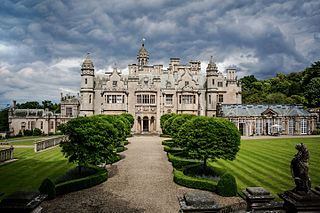
Harlaxton Manor is a Victorian country house in Harlaxton, Lincolnshire, England. It was built for Gregory Gregory, a local squire and businessman. Gregory employed two of the leading architects of Victorian England, Anthony Salvin and William Burn and consulted a third, Edward Blore, during its construction. Its architecture, which combines elements of Jacobean and Elizabethan styles with Baroque decoration, makes it unique among England's Jacobethan houses. Harlaxton is a Grade I listed building on the National Heritage List for England, and many other structures on the estate are also listed. The surrounding park and gardens are listed Grade II* on the Register of Historic Parks and Gardens. It is now the British campus of the University of Evansville.
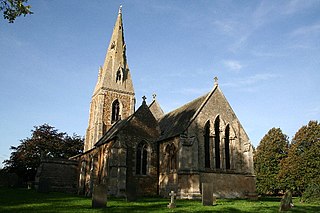
Marston is a village and civil parish in the South Kesteven district of Lincolnshire, England. The population of the civil parish at the 2011 census was 360. It lies 5 miles (8 km) north from Grantham, 8 miles (13 km) south-east from Newark, and 1.5 miles (2.4 km) north from the A1 near Long Bennington
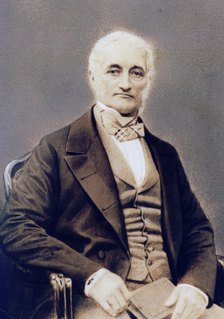
William Burn was a Scottish architect. He received major commissions from the age of 20 until his death at 81. He built in many styles and was a pioneer of the Scottish Baronial Revival.
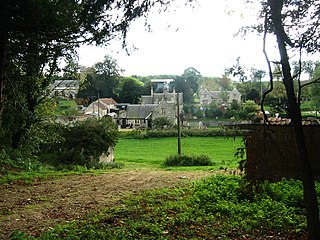
Stoke Rochford is a small English village and civil parish 5.5 miles (9 km) south of Grantham in the South Kesteven district of Lincolnshire. The population at the time of the 2011 census was 230. It has two notable Grade I listed buildings: Stoke Rochford Hall and the doubly dedicated St Mary and St Andrew's Church.
This is a list of High Sheriffs of Lincolnshire.

The Old Bishop's Palace is a historic visitor attraction in the city of Lincoln, Lincolnshire. When it was first built, in the late 12th century, it was at the centre of the vast Diocese of Lincoln, which stretched from the Humber to the Thames. The Palace was one of the most impressive buildings of medieval England, reflecting the power and wealth of Lincoln's bishops. It is situated on a spectacular hillside site, just below Lincoln Cathedral, providing extensive views over the city. The site lies immediately to the south of the Roman wall which had become the medieval defensive wall of the Bail, which enclosed both Lincoln Castle and Lincoln Cathedral. The palace was damaged during the Civil War and subsequently largely abandoned. During the period that followed the Bishop's main residence was Buckden Palace in Huntingdonshire. In 1841, following the reduction in size of the Diocese of Lincoln, the Bishop moved to Riseholme, to the north of Lincoln. This proved inconvenient and Riseholme Hall was sold. In 1886 an older building on the western side of the Palace enclosure was substantially rebuilt and enlarged in a Tudor revival style by the architect Ewan Christian. A further change occurred in 1888 when the architects Bodley and Garner rebuilt and converted the southern portion of the medieval Great Hall into a chapel for the Bishop.

South Rauceby is a village and civil parish in the North Kesteven district of Lincolnshire, England. It is situated 2.5 miles (4.0 km) west from Sleaford. The village of North Rauceby is less than 1 mile (1.6 km) to the north. The 2001 Census recorded a village population of 330 in 161 household, increasing to 367 at the 2011 census.
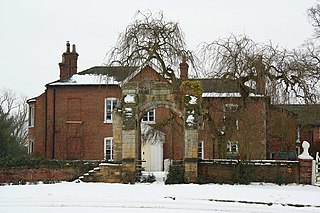
Kettlethorpe Hall is a Victorian house in Kettlethorpe, Lincolnshire, noted for its connection to Katherine Swynford, Duchess of Lancaster. It encloses fragments of the former manor house including the medieval gatehouse, within the surviving moat. It is a Grade II listed building.
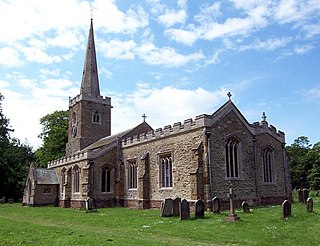
Hainton is a village and civil parish in the East Lindsey district of Lincolnshire, England. It is situated on the A157 road, 10 miles (16 km) west from Louth and 5 miles (8 km) south-east from Market Rasen.

Weston Cracroft Amcotts was an English Liberal Party politician who sat in the House of Commons from 1868 to 1874.

Hannah cum Hagnaby is a civil parish in the East Lindsey district of Lincolnshire, England. It is situated approximately 4 miles (6 km) north-east from Alford, and 15 miles (24 km) south-east from Louth The parish contains two small hamlets, Hannah and Hagnaby. Hannah was used in the Bronze Age as there is evidence of a Round Barrow. In antiquity Hannah was known as Hannay. The church, in Hannah, is dedicated to Saint Andrew and is a Grade I listed building, built of greenstone about 1758, with early 19th, and some 20th-century, alterations.
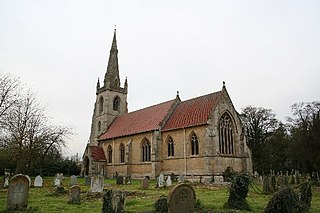
Revesby is a village and civil parish in the East Lindsey district of Lincolnshire, England. It is 7 miles (11 km) south-east from Horncastle, 8 miles (13 km) east from Woodhall Spa and 14 miles (23 km) north from Boston, and on the A155. The parish includes the hamlet of Moorhouses 3 miles (5 km) to the south of Revesby village.

James Fowler, known as 'Fowler of Louth', is best known as a Victorian English church architect and associated with the restoration and renovation of churches. However, he was also the architect of a wide variety of other buildings. A listing of his work compiled in 1991 traced over 210 buildings that he designed or restored. He is known to be the architect for 24 new churches and his work also included 40 vicarages or rectories, 13 schools, four almshouses, a Savings Bank, a convalescent home and hospital as well as country houses and estate housing. Most of Fowler’s work was in Lincolnshire and particularly around Louth, but he also worked in the East Riding of Yorkshire, Nottinghamshire, Staffordshire, Suffolk, London, Sussex and Devon.

Gedney Broadgate is a hamlet in the civil parish of Gedney and the South Holland district of Lincolnshire, England. It is situated west from the A17 road, 1 mile (1.6 km) south from Gedney, and 1.5 miles (2.4 km) west from Long Sutton. It includes the area known as Harford Gate.

William Mortimer (1841/42–1913) was an architect working in Lincoln from around 1858. He also played for the Lincolnshire County Cricket team.

Ellys Manor House, or the Old Rectory is a late-fifteenth to early sixteenth century manor house in Great Ponton, Lincolnshire, England. It was built by Anthony Ellys, a wool merchant, and member of the Staple of Calais, who also built the tower of the village church. The house was restored as a Rectory, by the Grantham architect Wilfred Bond. The house is now privately owned, but the house and garden are open to the public at certain times; it is a member of the Historic Houses Association.
Lieutenant-Commander John Cracroft-Amcotts, DSC, DL, JP was an English landowner, soldier and local politician, who served as Vice-Chairman of Kesteven County Council and High Sheriff of Lincolnshire.
Lieutenant-Colonel Sir Weston Cracroft-Amcotts, MC, DL, JP was an English land-owner, soldier and local politician, who served as Chairman of Lindsey County Council and High Sheriff of Lincolnshire.
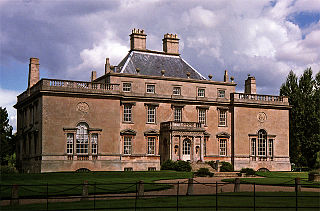
Culverthorpe Hall, Culverthorpe, Lincolnshire, England is an 18th century country house. It is a Grade I listed building.
















